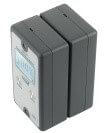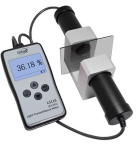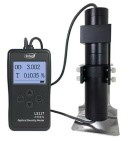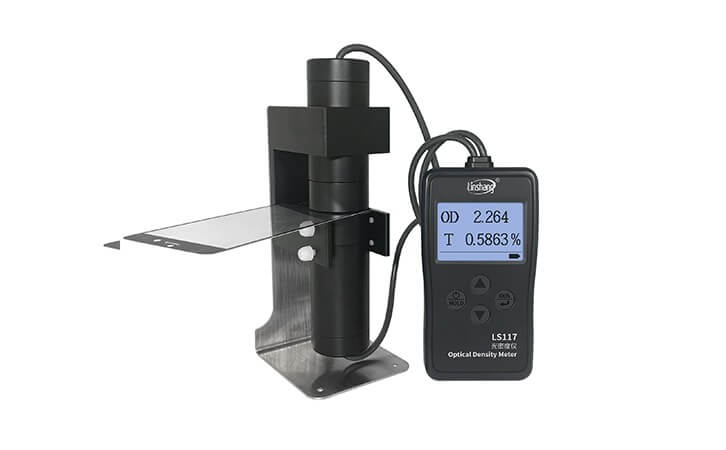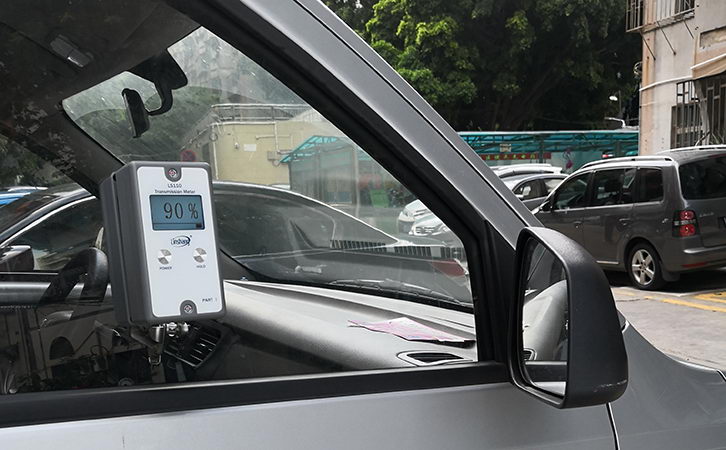Light Transmittance Meter Selection and FAQ
Light transmittance meter, as a professional equipment for material transmittance detection, is widely used in the transmittance test of various transparent and translucent materials such as glass and plastic. As a professional light transmittance meter manufacturer, Linshang provides you with the price, characteristics and parameters of the Linshang light transmittance meter which provide the customers a comprehensive reference for you to purchase the light transmittance meter.
I. Linshang Light Transmittance Meter Selection Table and Price List
II. Product Details of Linshang Light Transmittance Meter
1. Linshang LS116 High Precision Light Transmittance Meter
Mainly used for testing the transmittance of glass products. The instrument uses a white light source that complies with the CIE photopic luminosity function. It adopts a parallel light path design, so that the accuracy of this light transmittance meter can reach ± 1%. It can be said that it is a portable high-precision light transmittance meter with the highest accuracy on the market.
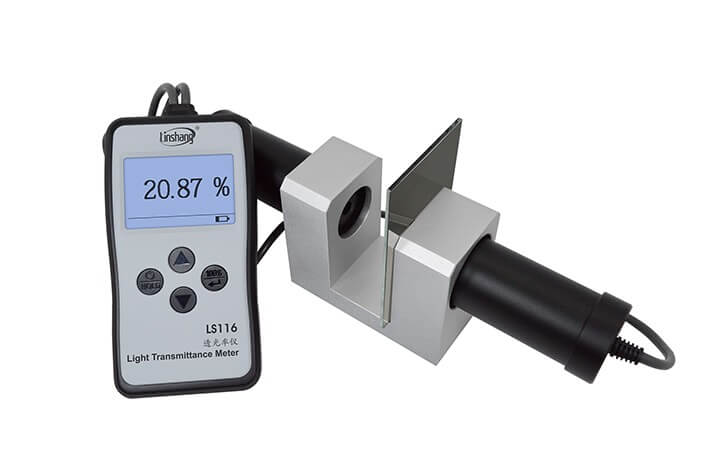
LS116 Light Transmittance Meter
● Two test methods: fixed base measurement and on-site measurement (the probe has its own magnetic force, which can be taken down to test larger materials)
● High precision, can measure 100mm thick material
● Make sure to pass the inspection of Chinese National Metrology Institute
● Power supply: 4 AAA batteries
2. Linshang LS117 Light Transmittance Meter (optical density meter)
Linshang LS117 light transmittance meter is also called optical density meter, this is an instrument suitable for the detection of translucent materials such as opalescent, matte and mist materials. It uses the diffuse transmission principle with integrating sphere. At the same time, it is also an optical density meter suitable for the optical density detection of film, aluminized film and other materials.
● Applicable to transmission test of frosted glass,opalescent acrylic and other materials
● Optical density test for low-light transmission materials such as aluminized film
● Optical density measurement accuracy: ± 0.02 (0 --- 2.00 OD), ± 2% (2.00 --- 6.00 OD)
● Power supply: 4 AAA batteries
3. Linshang LS110 Split Light Transmittance Meter
The reason why the Linshang LS110 is called a split type light transmittance meter is that the instrument is composed of a main unit and an auxiliary unit. There is a strong magnetic force between the main machine and the auxiliary machine, which can automatically attract together. Due to this special structural design, this instrument is particularly suitable for the detection of light transmittance of installed glass such as automobile front windshields and curtain wall glass. Because there is a national standard for the transmittance of automobile front glass, this LS110 split light transmittance meter is widely used in car inspection stations, vehicle management offices, traffic police brigades and other institutions.
● Light source: 380nm-760nm full wavelength, in line with CIE photopic luminosity function
● Measurement accuracy: better than ± 2% (colorless and uniform light-transmitting substance)
● Power supply: rechargeable lithium battery
According to the application of various industries and the performance difference of the tested products, Linshang Technology provides different types of light transmittance meters for users to choose. We believe there is always one you need.
III. FAQ about Linshang Light Transmittance Meter
-
1. To test the front glass of a car, should I use the LS110 or LS116 light transmittance meter?
Both products can be used. We generally recommend using the LS110 light transmittance meter for traffic police teams, car inspection stations and other occasions based on product characteristics, because these places need to take pictures after archiving. For the measurent of the car front gear on site, it is more convenient to operate the instrument without a connection line. However, for some optical glass manufacturers or automotive glass manufacturers, LS116 light transmittance meter is more flexible.
-
2. What are the advantages of the LS116 light transmittance meter compared with similar products on the market?
With parallel light path design, the test material can measure up to 100mm thick.
High precision, conforming to the CIE photopic luminosity function and the precision is better than ± 1%, ensuring that it passes the test of the Chinese National Metrology Institute.
High resolution, the highest resolution can reach 0.001%.
The light transmittance can be measured up to 99.8%. For ordinary instruments, if the light transmittance is higher than 96%, the instrument will display 100% transmittance.
-
3. How long is the service life of the LS116 light transmittance meter? If calibration is required, how often does it need to be calibrated?
There is no problem in using the instrument for five or six years. When the instrument is turned on without putting test materials, as long as the instrument screen can display 100% light transmittance, it means that the instrument can be tested normally.
The National Metrology Institute recommends calibrating the instrument once a year, but as long as our light transmittance meter can still pass self-calibration, the test data is accurate.
-
4. What is the difference between LS116 light transmittance meter and LS117 optical density meter?
LS116 is suitable for measuring the light transmittance of transparent uniform regular transmission materials. The diameter of the measured material should be greater than 10mm, the thickness should be less than 100mm.
LS117 is suitable for measuring the light transmittance of diffuse transmission materials such as opalescent, fog and matte mateirals as well as the optical density of low transmission materials. The diameter of the measured material must be greater than 2mm.
-
5. Why is the LS117 optical density meter so expensive?
The LS117 adopts the principle of diffuse transmission, which measures the light transmittance and optical density at the same time. It can measure the light transmittance of semi-transparent materials such as opalescent, fog and matte mateirals as well as the optical density of low transmission materials. Most light transmittance meters on the market can only test the light transmittance of regular transmission materials. The transmittance of a diffuse transmission material must be measured with an instrument based on the principle of diffuse transmission for accurate data.
The test data of LS117 is the same as X-rite 341C, but the price is much more affordable.
-
6. Can we use LS117 optical density meter to test film?
The instrument can only test black film, but not yellow film.
-
7. Can we use LS117 optical density meter to measure the thickness of the ink / aluminum coating?
LS117 measures the optical density (OD) of the material, not the thickness. However, the optical density value (OD) of a material is proportional to the thickness of the material. The larger the optical density value (OD), the thicker the material. If you want to check the thickness uniformity, you can also use the OD value to judge.
-
8. How does the data of LS117 compared with that of spectrometer + integrating sphere when testing opalescent material?
The transmittance measured by LS117 will be slightly higher and the optical density will be slightly lower. It is explained in the international standards as follows:
The ISO 5 series standard uses the opalescent glass method instead of the integrating sphere method. Although any diffusion method that meets the requirements can be used, for simplicity, the "opalescent glass" is usually used to mark its diffusion method to distinguish it from the integrating sphere diffusion method. Due to the influence of the mutual reflection between opalescent glass and the sample, the density value obtained is usually slightly lower than that obtained by the integrating sphere method. The actual effect depends on the reflection characteristics of the opalescent glass and the sample surface facing the diffuser.
-
9.Are you a manufacturer or trade company?
We are factory , we have engineers for researching & designing and workers for produce and operate etc, we could support you one-stop products and service.
-
10.Do you offer OEM and ODM service?
Yes. We can supply OEM and make customized design for any specific application.
- Linshang Insulated Glass Unit Measuring Tools
- Spectacle lens anti-blue light detection---blue-violet light transmittance meter
- Measurement of Optical Density
- Difference of LS116 Transmission & LS117 OD Meter
- Difference between LS116 and LS117 Light Transmittance Meter
- What’s the Difference Between Point Light and Parallel Light Transmittance Meter
